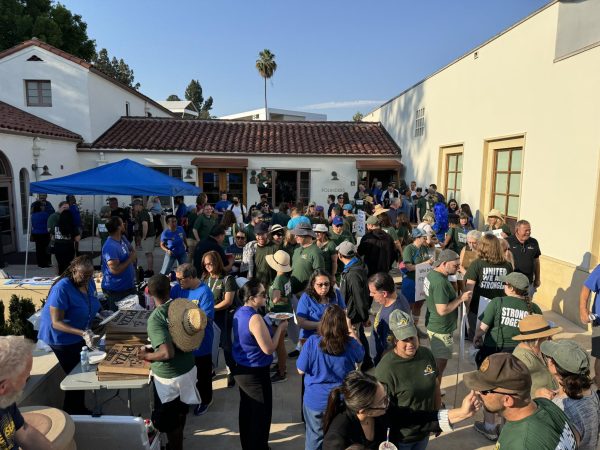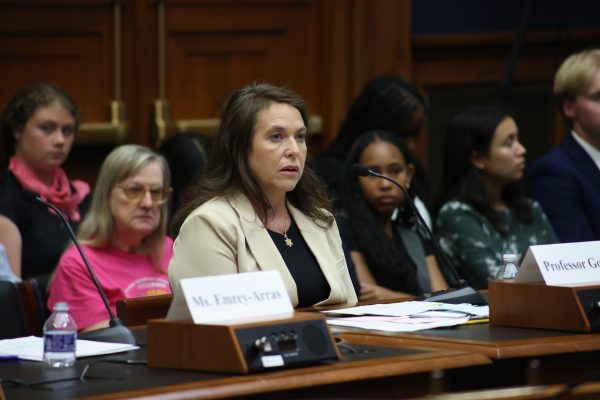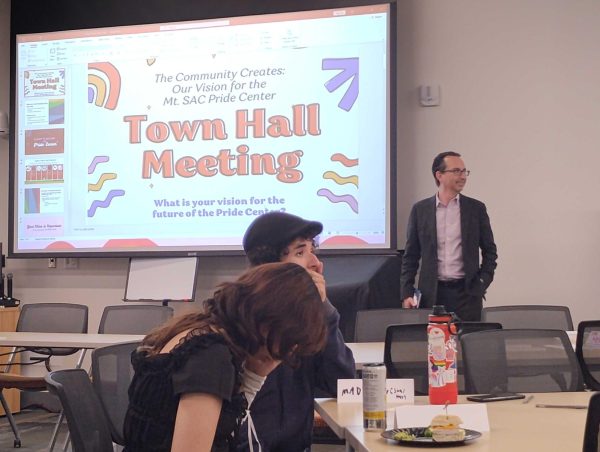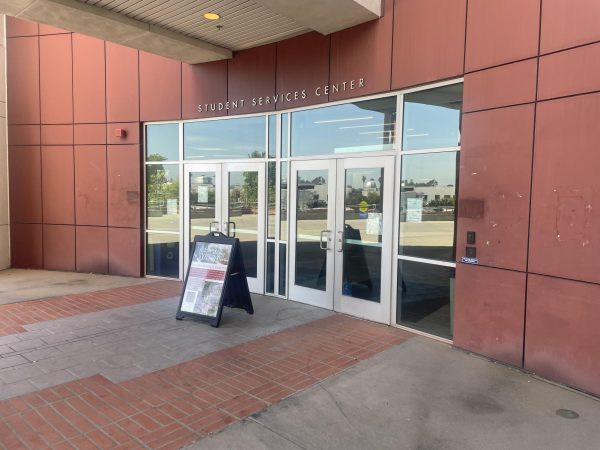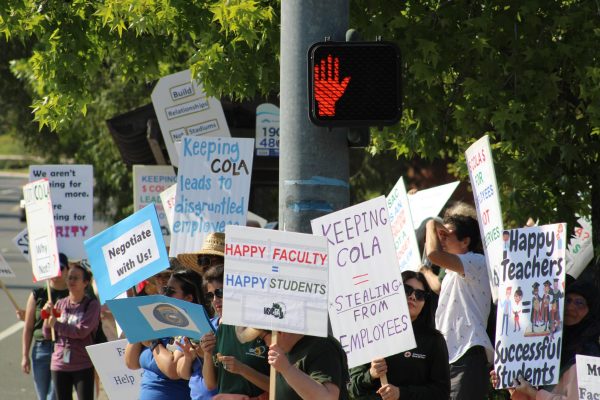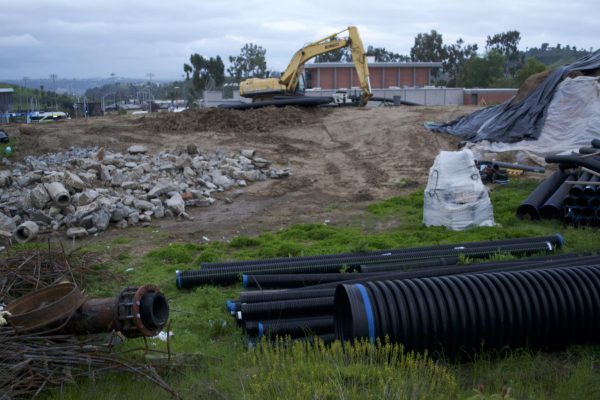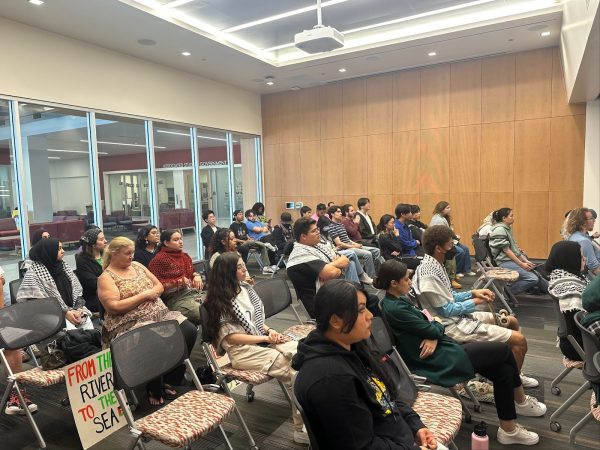Early Days: Pandemic Shuts Down Mt. SAC
Part one of SAC.Media’s four part investigative series regarding the pandemic’s impact on the college
The fall semester of 2020 first looked to be a time of promise and progress for the students and faculty of Mt. SAC. The sentiment of tackling new challenges and overcoming old obstacles was infectious. It was supposed to be a time to conquer long awaited goals and to solidify a legacy.
What was waiting around the corner would soon devastate all ambition and hope in the hearts of every Mountie. With cases of COVID-19 growing in Los Angeles County just one week into the month of March, a sense of concern began to grow. Reports of a woman dying of the virus in Walnut on March 12, 2020 began to instill a campus wide panic.
This hysteria quickly meshed with anger. The Mt. SAC administration declared that a campus closure would not be considered until the response levels reached a level four. This response level called for at least five confirmed cases amongst the student body and/or faculty. To reflect upon the community’s outrage, an anonymous student started an Instagram account by the name of @coronavirusmtsac.
This student bluntly explained how absurd they felt this protocol was by saying, “The idea of letting five people have COVID-19 and then saying, ‘Okay, let’s shut down campus now’ is ridiculous. That compromises the safety of the other 59,995+ students who are healthy.”
Amidst inaction from administration, multiple petitions were being signed by the student body to close the campus. This plea to the overseers of the school went unanswered. Just five days after the local woman’s death, the campus had reached level four on March 17, 2020. The campus was only to be shut down for two weeks.
The simple direction of closing campus only preceded the more complicated conversation of how students were to continue their education. Going online with classes seemed like a no-brainer in this technological world, but there were numerous hurdles that everyone would be forced to jump over.
The amount of students needing access to materials in order to transition to online learning proved to be rather challenging. For many faculty, this would be their first time teaching online. The logistical aspects and emotional toll were overwhelming for many.
Radio department head Jason Shiff commented on his experience during the transition.
“I didn’t even know Canvas at the time,” Shiff said. “Trying to learn Canvas, to learn Zoom. It was so much, so quick, my head was spinning.”
Shiff’s initial reaction to the genesis of the pandemic was nonchalant. He told his wife, a fellow teacher, early on that they would travel after things lightened up.
“Maybe we’ll have like two weeks, maybe we can go to New York on a trip. Just get out and have a good time,” Shiff added. “Then I started seeing what was going on in New York, and started seeing that this was serious.”
According to the CDC, approximately 203,000 cases of laboratory-confirmed COVID-19 were reported in NYC during the first three months of the pandemic. The horror of these first initial numbers were reflected through the experience of some of our fellow students and faculty.
Tianna Winters Media Marketing Manager Brigette Lugo, 32, was in New York City as SAC.Media’s managing editor for the spring national conference held by the College Media Association. With this annual CMA event being highly regarded and widely recognized, those attending had no idea what was waiting for them.
Lugo recalled the initial shock and fear that she experienced while being trapped in the city.
“We were scared that we were going to get stuck, because we were hearing flights getting canceled left and right, a lot of systems were shutting down because this was so much to handle,” Lugo said.
With the great confusion that would soon ripple throughout the country, the CMA were ridiculed for the lack of response and approach to safety.
“These are full grown adults, organizing this event with adults attending, who paid a certain portion to go,” Lugo added. “We had to cancel events on our end, we had to miss school, and they just treated it like it was a joke.”
Should they have attended, they were to be confined in small enclosed spaces with no safety supplies or protocol to follow. Before the conference could commence, the Mt. SAC attendees made the decision to return home.
“Literally day two we were there, and Broadway was shut down. It was really crazy,” she said. “We were kinda freaking out at that point.”
Lugo, along with the journalism team, would arrive back on the West Coast expecting to return to the safety of the campus. Instead, March 20, 2020 would mark the official closure of the campus and the transition to online classes.
By May 2020, Mt. SAC would distribute 700 laptops along with iPads and internet hotspots to students in need of technical assistance while embracing distance learning.
Even a few months before the crisis cemented its presence, there were signs of what was to come.
UC Berkeley student Natalie Lu had traveled to San Francisco as SAC.Media’s editor in chief for a conference that took place during the virus’s infancy.
Despite a state of emergency being declared on Feb. 22, 2020 by the mayor of San Francisco due to the rising cases in the city, the conference went on as planned.
“I remember that because this was still in the very early days of COVID, everyone just kind of laughed at me for wearing a mask,” Lu said. “So for the entirety of the conference, I didn’t really wear a mask, which is silly. I’m actually kind of ashamed about it.”
She did not contract COVID-19, but due to traveling during the winter months she did end up getting rather sick. The assumptions by her classmates and coworkers were different.
“It actually was a throat infection, and I scared a lot of people,” Lu added. “I didn’t go to class for a couple weeks.”
Former broadcasting student Eric Sanchez, 31, was transferred to Lubbock, Texas for a promising future in radio only a few months before the chaos would ensue.
“There was a lot of hesitancy there,” Sanchez said. “It was a big difference between California and Texas.”
The Republican run state first approached the crisis with speculation as much of the country did during that time. Sanchez was given the responsibility to report for the benefit of the Spanish speaking community.
“I had to go out with the Spanish speaking market to inform them because nobody was really delivering that,” he added. “It was really interesting, because nobody really believed that this was real. No one did.”
He continued with how his new home in Lubbock ridiculed the scramble that was occurring in California.
“When you guys had the shortage of supplies, everybody in Texas was just looking at California like you guys are crazy,” Sanchez added. “Then a month later, that’s when it hit us out there. I was like, Oh my gosh, I was trying to find Chef Boyardee.”
The week of his birthday, all Sanchez wanted was to come home and see family. Not only would he get to return to the west, but it would be permanent.
“I really wanted to come home. Right before that, corporate said that nobody is traveling, and then I just get the message one day ‘hey, you’re being furloughed,’” he said. “So traveling back home was like a whole eye opener in itself because airports were empty.”
Financial distress would befall the population as jobs would be lost and work would become severely minimal. Broadcasting student Keith Forte had made the majority of his living in information technology.
“I did contracting and lost every account,” he said. “My income, everything. I’m starting off like ground zero and it really is starting from scratch.”
Something that most of us had not considered was how hard we would be hit on our taxes. Forte would find this out the hard way when tax season rolled around.
“You do your taxes in the first year, and you have the residual income from the previous year, but then you do the taxes the second year and there’s nothing there,” Forte added. “You can’t write off anything because you didn’t go anywhere then. My biggest write off was mileage.”
With the pandemic’s grip on finances, it would make its most crucial impact on health. Forte shed some light on how the wellbeing of himself and his family took a few major blows.
“I was waiting for surgery when the pandemic hit, and then the surgeries got put off for a year,” he said. “They didn’t want to see anyone. I had to wait a year for the surgery. My daughter had COVID early on and that was kind of hard to get through.”
What was thought to be a few weeks of inconvenience has turned into over two years. With no end in sight, Mt. SAC had to pivot to adjusting to this new format. The first step in handling the pandemic was to handle student safety on campus.





